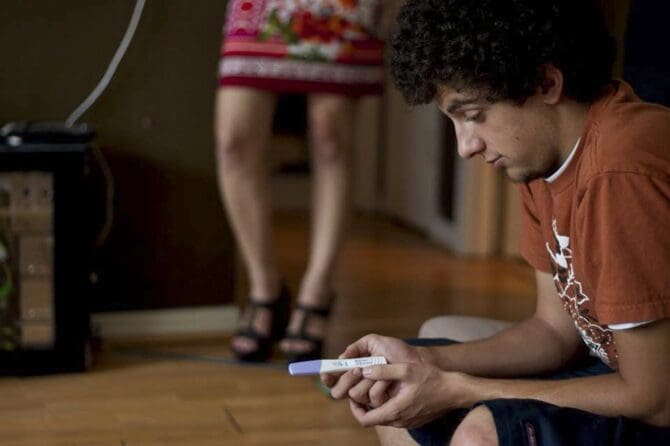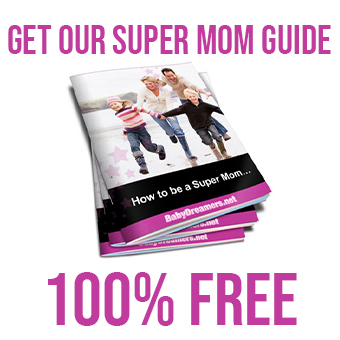A C-section may be required if the baby is not positioned correctly, the placenta obstructs the birth canal, the mother is infected, or the baby experiences distress.
If the placenta is lying low in the uterus and covers the birth canal (cervix), this is called placenta praevia. If the obstetrician detects a danger to the baby’s health caused by oxygen deprivation and vaginal bleeding, a natural delivery is unlikely to occur. In this case, the umbilical cord may fall forwards, and the baby cannot be delivered easily (a condition known as cord prolapse). If it becomes clear during labor that the mother will be unable to deliver the baby herself, a cesarean section may be necessary.
If you’re considering a Cesarean section, it’s important to understand that this major surgery comes with risks for both you and your baby. A vaginal birth is almost always safer, but there are some situations where a C-section may be the best option. Some reasons for a C-section could be a breech baby, maternal high blood pressure/illness, small/weak baby, or prior C-section.If you want a C-section without a medical reason, you should discuss this with your obstetrician.
If your baby is in the breech position, their feet or buttocks will enter the birth canal before their head. This is not ideal, as it can cause complications during childbirth. If your doctor is unable to move the baby into a more favorable position, you may need to have a C-section.
A C-section may be needed if your baby is lying horizontally across your uterus, with the head in the wrong position. If your baby enters the birth canal chin up or with the top of the forehead or face leading the way, he or she may not fit through your pelvis. A C-section may be the safer way to deliver the baby. You’re carrying twins, triplets or other multiples. When you’re carrying multiple babies, it’s common for one or more of the babies to be in an abnormal position. In this case, a C-section may be the best way to ensure the safety of all the babies.
Your baby is very large and may be too big to safely deliver vaginally. This is typically only a factor if you have diabetes or an underlying health problem. If you have diabetes, heart disease, or lung disease, your doctor might induce labor early to decrease the possibility of pregnancy-related issues. If the induction isn’t successful, you may need a C-section.
Herpes is a sexually transmitted disease caused by the herpes simplex virus (HSV). It can cause sores and blisters on the genitals and/or anus. If you have an active genital herpes infection, you may be recommended to have a c-section (cesarean delivery). This is because there is a risk that your baby could acquire the infection while passing through the birth canal.
If your baby has a health problem, a C-section may be the safest option. This is especially true for babies with spinal problems or hydrocephalus. If you’ve had a previous C-section, you may be able to try a vaginal delivery, depending on the type of incision and other factors. However, in some cases, your doctor may recommend a repeat C-section. Some women also elect to have a C-section for convenience.
A cesarean section is a type of surgery used to deliver a baby. It is usually performed when there are complications that make a vaginal birth unsafe.
During a cesarean, the mother is given a regional anesthetic (either a spinal or epidural) to numb the lower half of her body. The surgical team, consisting of an obstetrician, an anesthetist, a scrub nurse, and two other nurses or midwives, will clean and prep the mother’s abdomen before the surgery.
An incision is made through the mother’s lower abdomen and the baby is delivered through the opening. The obstetrician will then repair the incision with stitches.
The whole procedure takes around 30–40 minutes.
After the placenta (afterbirth) is delivered, the obstetrician closes the incision. Dissolving stitches or staples are used to close the skin. From beginning to end, an uncomplicated Cesarean will take between 20 and 30 minutes.
You will be given an anesthetic to numb the lower half of your body before the operation. Most anesthetists will perform a spinal or epidural anesthetic via a fine needle placed midway down the spine. You will be awake during the Cesarean but will not feel any pain. You may feel some pressure, pulling and tugging as the surgeon gets your baby out, but you should not feel any pain.
What are the risks of a c-section?
The mother faces primary risks like excessive bleeding during and after surgery, wound infection, and blood clot formation in the leg veins. Risks for the Mother A few women have one or more of these complications after a c-section:
Increased bleeding, which may require a blood transfusion
Infection in the uterus or the incision
A blood clot in the leg veins (thrombosis)
A pulmonary embolism (a blood clot in the lung)
Serious complications from anesthesia, such as respiratory problems
Although most women have no problems after a c-section, some women might have one or more of the following complications:
Heavy bleeding (hemorrhage)
Infection of the incision (wound infection)
Infection of the uterus (uterine infection)
Blood clot in the leg (deep venous thrombosis)
Blood clot in the lung (pulmonary embolism)
Most women are up and about within 24 hours of a Cesarean. Pain from the wound is controlled with appropriate painkillers. Most mothers leave the hospital four or five days after a Cesarean birth. A Cesarean section should not prevent a mother from breastfeeding her baby. Future pregnancies may also need to be delivered by Cesarean section because some indications for the original Cesarean persist into subsequent pregnancies.
Reasons for the need to have a c section:
Stalled labor is the most common reason for a C-section. Perhaps your cervix isn’t opening enough despite strong contractions over several hours. Or the baby’s head may simply be too big to pass through your birth canal. Your baby’s heartbeat suggests reduced oxygen supply. If your doctor is concerned about your baby not getting enough oxygen or changes in their heartbeat, they may suggest a C-section right away.
A C-section may be needed if your baby is lying horizontally across your uterus, with the head in the wrong position. If your baby enters the birth canal chin up or with the top of the forehead or face leading the way, he or she may not fit through your pelvis. A C-section may be the safer way to deliver the baby. You’re also more likely to need a C-section if you’re carrying high-risk multiples, such as twins, triplets, or other multiples.
C-section may be the safer option if there is a problem with the placenta. Placental abruption occurs when the placenta detaches from the uterus before labor begins, and placenta previa occurs when the placenta covers the opening of the cervix. A C-section may also be recommended if a loop of umbilical cord slips through the cervix ahead of the baby or if the cord is compressed by the uterus during contractions. Some babies are simply too large to be born vaginally.
If either you or your baby has a health condition like diabetes, heart, or lung disease, your doctor may consider inducing labor early to lower the risk of pregnancy-related complications. If the induction isn’t successful, you may need a C-section. A C-section might be necessary if your newborn has an active genital herpes infection or may contract another infection during natural delivery.
During a C-section, a team of medical professionals will be present, including the obstetrician, anesthesiologist and their assistants, a scrub nurse, two additional nurses or midwives, and a pediatrician. Your partner can be present if the operation is being carried out under a spinal or epidural anesthetic.
An incision of about 20 cm is made across the lower abdomen. The baby is delivered through the skin after the womb is opened. The womb is easily opened, and it takes only a few minutes to deliver the baby.
How will I be anesthesia during the Cesarean?
There are a few different types of anesthesia that can be used during a Cesarean section, but the most common is either a spinal or epidural anesthesia. This type of anesthesia will numb the lower half of your body so that you won’t feel any pain when the baby is born. A general anesthesia may be used in some cases, which will put you to sleep during the operation.
A Cesarean section is a safe operation for you and your baby. However, as with any major surgery, there are risks involved.
The main risks for the mother are heavy bleeding, infection, and blood clots. However, your obstetrician and midwife will take measures to reduce your risk of developing complications.
What are the options for getting around after a Cesarean?
Most women are able to get up and move around within 24 hours of a Cesarean. Pain from the incision can be controlled with medication. For most women, they will be able to leave the hospital four or five days after the surgery.
There should be no reason why a Cesarean section should stop a mother from breastfeeding her baby. While some women may require a repeat Cesarean section for subsequent pregnancies based on previous indications, the majority of women can opt for a vaginal birth.











